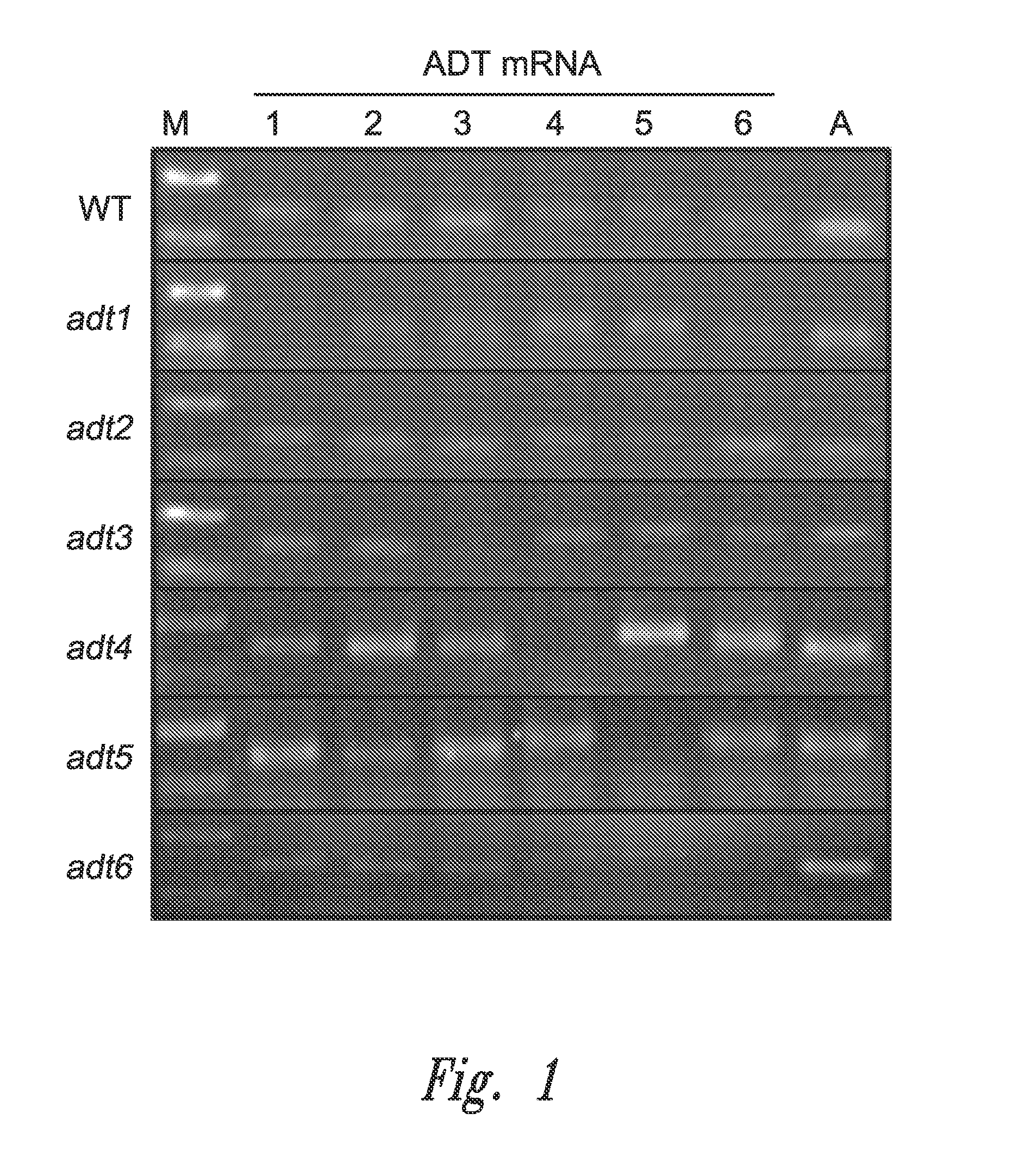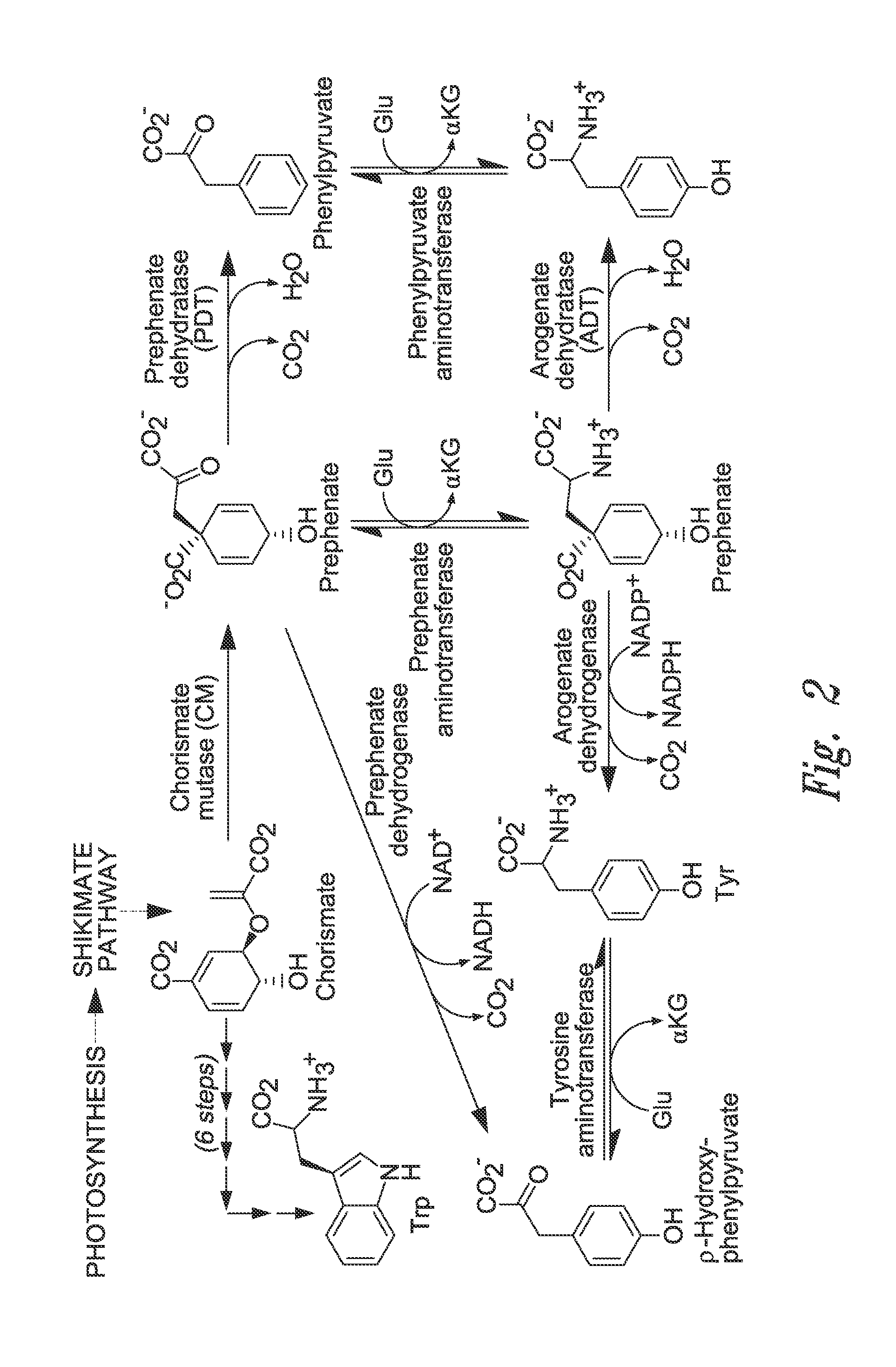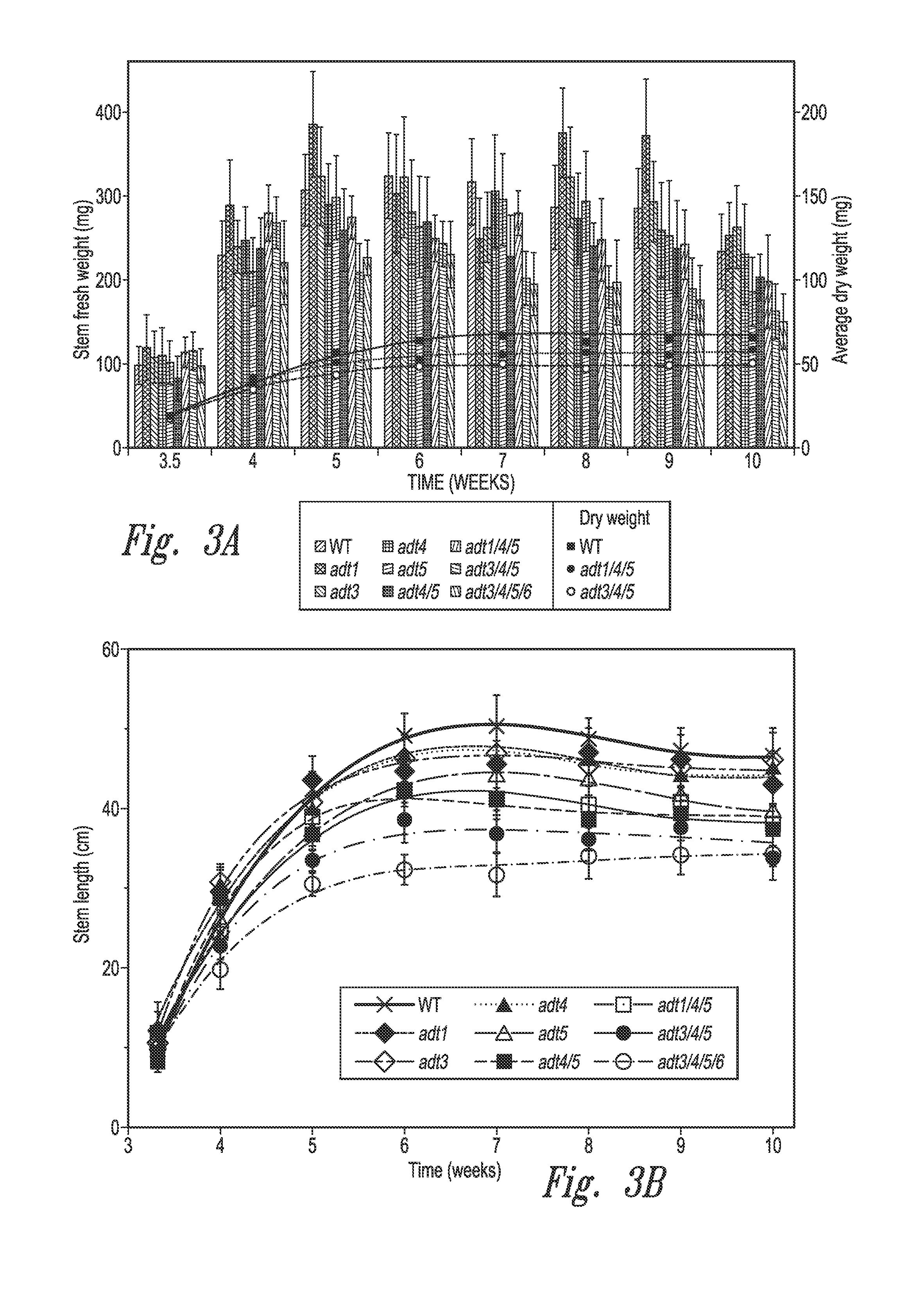Arogenate dehydratases and lignification
a technology of arogenate dehydrase and lignification, which is applied in the field of lignin production in plants, can solve the problems that the approach does not take into account the potential seamless integration of related components, and achieves the effects of reducing, reducing, and reducing) lignin contents
- Summary
- Abstract
- Description
- Claims
- Application Information
AI Technical Summary
Benefits of technology
Problems solved by technology
Method used
Image
Examples
example 1
Methods; Generation and Confirmation of Single, Double, Triple and Quadruple ADT Knockout Lines was Accomplished
[0173]Kits.
[0174]All commercial kits were used according to the manufacturer's instructions, with any minor deviations noted.
[0175]Generation and Confirmation of Single, Double, Triple and Quadruple ADT Knockout Lines—
T-DNA insertion lines for all six ADT genes in Arabidopsis (Table 1), were obtained from either SIGnAL (34) or INRA (35). For each T-DNA insertion line, DNA was extracted from leaves of individual plants using the RedExtract kit (Sigma) with these samples then individually used as a template for two PCR reactions with different primer sets. For SALK lines, gene-specific left and right primers LP+RP, respectively, were used to amplify WT-specific PCR products, and left-border primer site “c1” (LBc1)+RP were used to amplify T-DNA-specific PCR products (Table 1: LBc1: 5′-CACAATCCCACTATCCTTCGC-3; SEQ ID NO:1). For the INRA line, the T-DNA-specific primer FLAG-LB ...
example 2
Methods; Arabidopsis Growth and Harvest Conditions were Used
[0176]Arabidopsis Growth and Harvest Conditions—
[0177]All confirmed homozygous KO and WT lines were grown in soil with four plants per pot in Washington State University greenhouses (16 h days, 27-28° C.; 8 h nights, 24-26° C.; 200 ppm nitrogen-based fertilizer added 5 days a week). For lignin analyses, the main stems of at least 48 plants were harvested weekly from after initial stem emergence up to maturity (˜3.5 to 10 weeks). The weights and lengths of 20 inflorescence stems from each line were measured, with these then subsequently cut into 0.5 to 1 cm long pieces, lyophilized and stored at room temperature prior to lignin analyses. For histochemical staining, two main stems for each ADT KO and WT line were harvested at 7 weeks.
example 3
Methods; Real Time RT-PCR Analysis of ADT KO Lines was Accomplished
[0178]Real Time RT-PCR Analysis of ADT KO Lines—
[0179]Stem tissue for WT and selected ADT KO lines were harvested 5 weeks after planting, flash frozen in liquid N2 and stored at −80° C. until use. Frozen tissue was ground using a mortar and pestle, and ˜90 to 110 mg was transferred to a 1.5 ml microcentrifuge tube. Total RNA was extracted using the Spectrum™ Plant Total RNA Extraction Kit (Sigma-Aldrich). RNA quantity and quality was assessed using a Nanodrop 2000c spectrometer (Thermo Fisher Scientific Inc.), and mRNA (1 μg) was reverse transcribed to cDNA using Superscript III (Invitrgogen). Gene-specific primers for each ADT isoform and housekeeping gene, TIP41-like (AT4G34270; GI:145352648 (Czechowski, T., et al., 2005)) were designed using Primer Premier 6.10 software (Premier Biosoft International) (see Table 2). The SYBR Green Real Time RT-PCR kit (Invitrogen) was used for real time RT-PCR reactions, with 0.05...
PUM
| Property | Measurement | Unit |
|---|---|---|
| Fraction | aaaaa | aaaaa |
| Fraction | aaaaa | aaaaa |
| Fraction | aaaaa | aaaaa |
Abstract
Description
Claims
Application Information
 Login to View More
Login to View More - R&D
- Intellectual Property
- Life Sciences
- Materials
- Tech Scout
- Unparalleled Data Quality
- Higher Quality Content
- 60% Fewer Hallucinations
Browse by: Latest US Patents, China's latest patents, Technical Efficacy Thesaurus, Application Domain, Technology Topic, Popular Technical Reports.
© 2025 PatSnap. All rights reserved.Legal|Privacy policy|Modern Slavery Act Transparency Statement|Sitemap|About US| Contact US: help@patsnap.com



